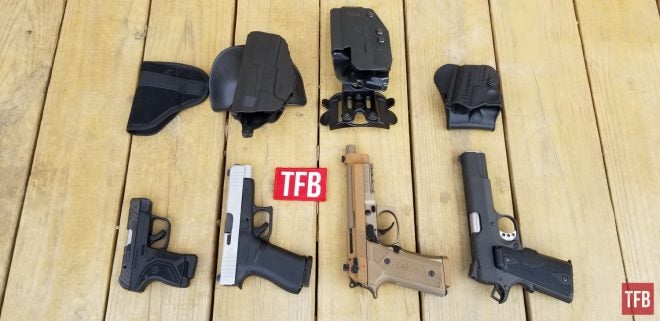While “Buying Holsters for Dummies” isn’t a book yet, it should be. The holster is the everlasting companion of the handgun. Many of you no doubt have probably purchased a handgun fairly recently and with good reason. In these uncertain times, it is paramount that we are ready and able to defend ourselves and our loved ones from all threats both at home and out in the world. Handguns are a great defensive tool to have on hand when they’re needed but selecting the right gear for the job can be just as important.
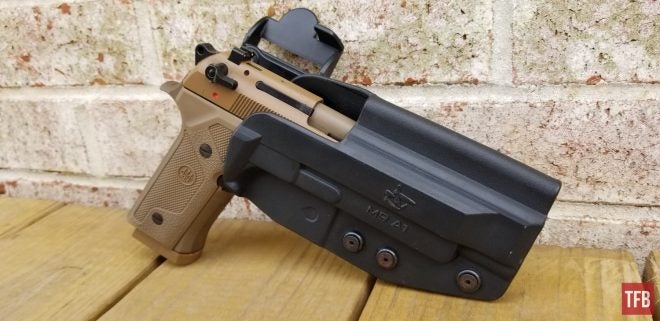
Buying Holsters for Dummies: A Guide to Choosing a Proper Holster
While gear isn’t the be all end all of the defensive preparedness you don’t want to put yourself at a disadvantage by selecting the wrong gear. So today we’ll go over a brief guide to selecting a quality rig and explain why this is one of the most important steps to owning and carrying a handgun for defensive purposes.
Buying Holsters for Dummies: A Guide to Choosing a Proper Holster
Basic three rules for holsters
Before we get into the meat and potatoes of the guide, you’ll want to keep these three questions in mind when looking at buying any holster for defensive use. If the answer to any of them is “no” then you should probably get a different holster.
- Is the trigger covered completely?
- Does the holster adequately retain the firearm?
- Can I safely and consistently draw the firearm from this holster?
With these three rules in mind, we can get into a few more nuanced points about selecting a good rig for your carry setup. At the end of an article, I’ve included a shortlist of some of the best holster manufacturers that should cover just about any firearm worth carrying.
Construction Material
The most common and effective materials that holsters are available in are Leather, Polymer (Kydex is a type of polymer) and Nylon. Quality holsters can be found within all three of these categories. Nylon and Polymer tend to be the bulkiest and less expensive options. One downside of Kydex holsters is that they tend to get brittle over time and break, the upside is that they are incredibly cheap and easy to replace.
Leather conceals well and is comfortable but will come at a premium price for high-quality leather. Another downside with leather is that holsters made of it will tend to need a “break-in” period to fully adjust to the shape of the gun for a proper fit but then tend to loosen up over time. However, leather holsters will probably outlive you if you select the right one – even with daily use.
Most decent holsters will cost you at least $50, anything less than that you’re either finding a deal of a lifetime or the holster manufacturer is cutting corners in one area or another. A good holster will commonly cost $100 or more and while that seems expensive you must ask yourself – what is your life worth to you?
Retention
The ability of your holster to properly retain the firearm is important. While getting the holster to cover the trigger is a good start, that aspect will do you no good if the firearm is able to walk itself out of the holster and expose the trigger. A lot of polymer holsters will use a tensioning screw to basically grip the gun in place.
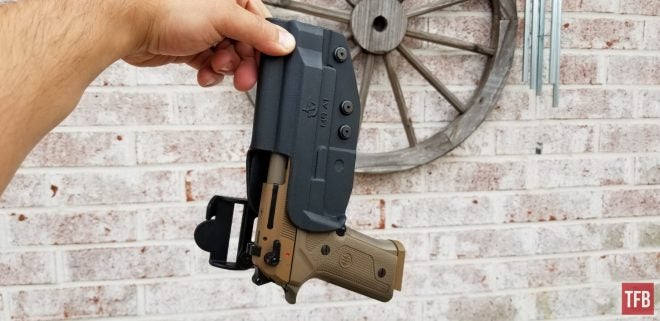
Buying Holsters for Dummies: A Guide to Choosing a Proper Holster – An example of a tension-based retention system.
These can be frustrating to get right as even the slightest turn of the tensioning screw can overtighten or loosen the grip. If you can both unholster the gun by hand and turn the holster upside down and shake it a bit without the gun coming out that is a good sign of decent retention. However, the next two options provide much better retention.
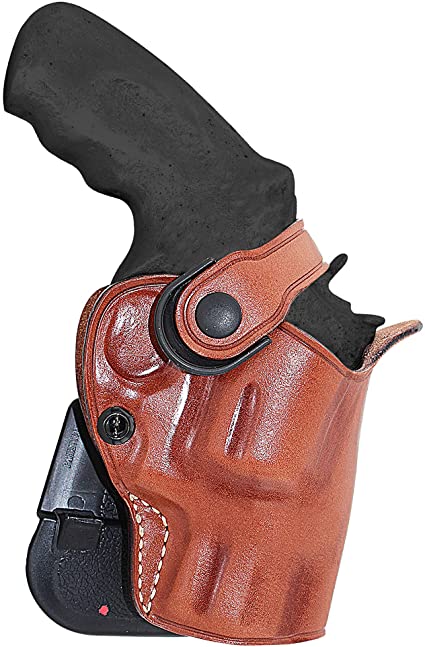
Buying Holsters for Dummies: A Guide to Choosing a Proper Holster
Many leather holsters will use a thumb strap that goes across the back of the pistol’s grip to keep the gun in place. To unholster the gun simply requires unbuttoning the strap to free the gun. A quality holster will have a thumb strap (sometimes with a plastic tab) that won’t come loose unless you intend to pull it off.
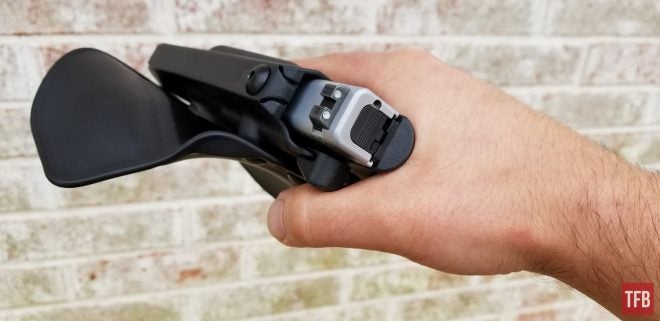
Buying Holsters for Dummies: A Guide to Choosing a Proper Holster – A Safariland holster using the ALS retention system
Finally, active retention comes in many shapes and forms but the gist of it is that you’ll have to press a button or some other type of mechanical lock in order to free the gun. My personal recommendation is the Safariland ALS system as it combines an extremely effective locking system and a clean and safe draw method. The downside of the ALS is that it is bulkier and larger than others and can be hard to conceal under lighter clothing.
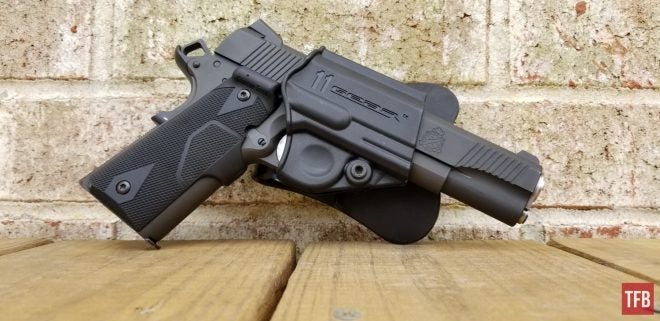
This style of holster lends itself well to competition purposes. The bottom half of the gun is exposed opening itself up to being bumped out of the holster.
As a quick final note on retention, I find that holsters that leave the muzzle of the gun exposed at the bottom of the holster are not so great as they increase the likelihood that you’ll bump the muzzle and unholster the gun – try to avoid these styles of holsters.
Carrying Style
Not everyone is going to carry the same. Most will opt to carry on their hip with the holster mounted somewhere between the 3 and 5 o’clock position. However, this position can be uncomfortable when sitting for extended periods of time. Ladies, in particular, don’t always wear the best clothing for concealment so options like purse carrying come into the playing field.
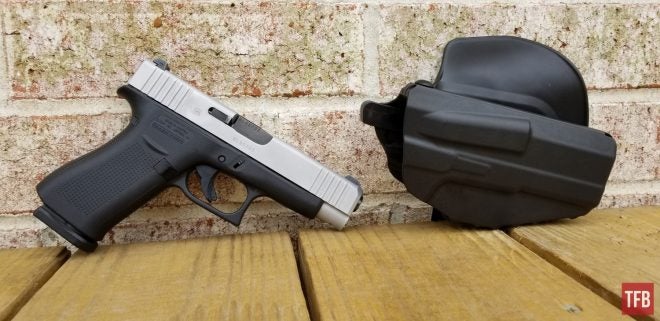
Buying Holsters for Dummies: A Guide to Choosing a Proper Holster
Regardless of how you choose to carry the gun, you’ll want to make the holster will aid your desired carry style. For inside the waistband (IWB) holsters, I find that using a high-quality clip-on style holster will give you the best of both worlds in terms of ease of use and comfort. Hybrid holsters (holsters that combine a hard outer shell with a malleable backing), can provide greater comfort but oftentimes they fall short in the quality department and re-holstering becomes more dangerous because of the malleable backing.
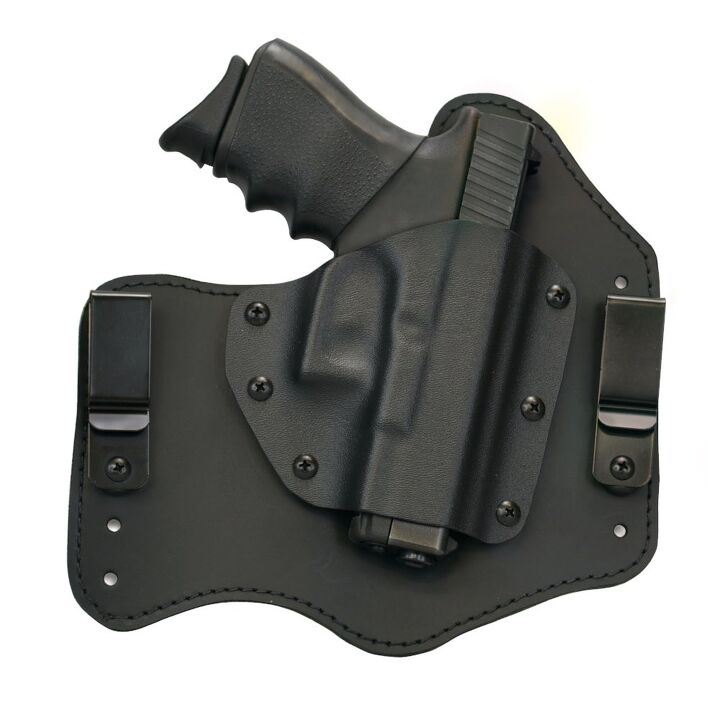
Buying Holsters for Dummies: A Guide to Choosing a Proper Holster – An example of a Hybrid Holster
Purse carry often comes up when women start carrying guns as women’s clothing doesn’t always provide the best concealment. The same can be said when you want to carry a gun in a backpack or fanny pack if you’re out jogging and traditional means of carrying are not feasible. With this style of carrying I find that the best solution is to find a holster that can be secured to the inside of whatever you’re carrying it in. This way, the gun is in the same position every time you go to draw it. A second benefit is that the holster will also not come out of the bag when you go to draw it. The same rules can be applied to pocket carrying.
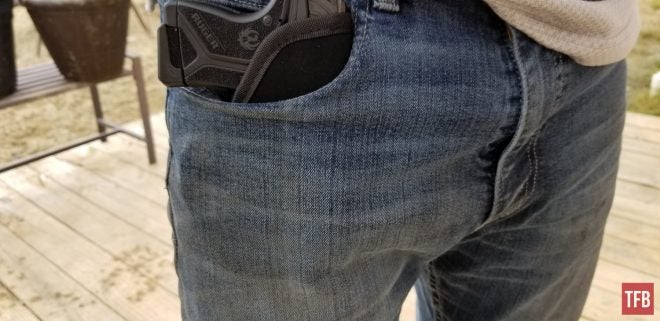
Pocket guns are so small that even in fitted clothing they are hard to notice when secured inside a pocket holster.
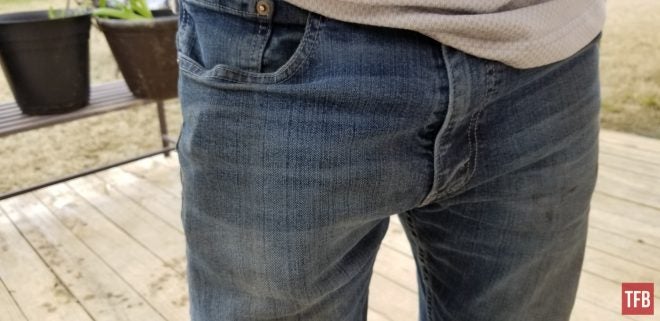
Finally, outside the waistband (OWB) carry. Since the gun is outside your waistband the only means of concealment is going to be a large shirt or jacket. The benefit of OWB carry is that you can achieve the highest level of retention while also giving yourself the highest level of readiness to draw the weapon. As with all these categories make sure you’re selecting a quality product that is both durable and has adequate retention.
Final THoughts
Selecting a proper holster can be intimidating for new gun owners, but it doesn’t need to be. As with anything in life, a good amount of basic information can weed out potential products that will hinder your carrying capabilities. Stick with safe practices like keeping the trigger covered while carrying, choosing high-quality durable construction materials and buying a holster that will give you a consistent draw.
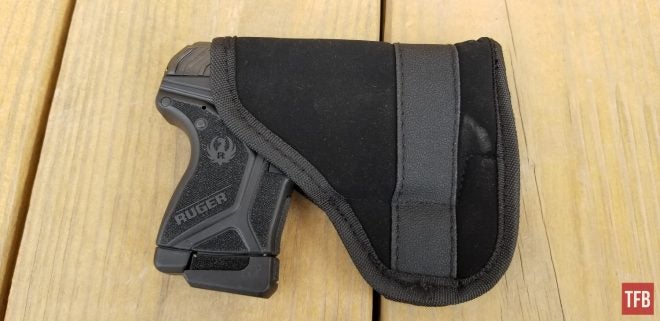
Buying Holsters for Dummies: A Guide to Choosing a Proper Holster
That final point is extremely important – especially when carrying in a bag. Consistency is king, so after you go buy your holster go and wear it! Go and train with it! The last thing you want in a life-threatening situation is to have to think about where your gun is and how you’re going to get it out of its holster and into firing position – make sure you can consistently and quickly bring your weapon to bear if the need arises.
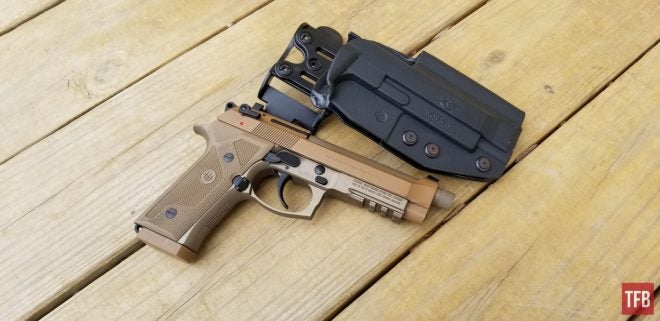
Buying Holsters for Dummies: A Guide to Choosing a Proper Holster
Keep an eye out for grace period deals with holster manufacturers. Good holster manufactures are there to help you stay safe and they’ll often give you several weeks to try out your holster risk-free in case it isn’t working out for you – be honest with yourself and find out what works best for you while maintaining a high standard of quality. Don’t be afraid to own more than one holster even if you’ll only use a few of them seldomly.
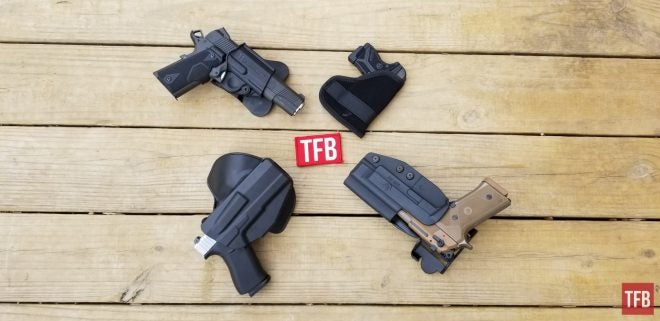
Buying Holsters for Dummies: A Guide to Choosing a Proper Holster
As a final thought, remember that the holster is an extension of the gun. Your holster is part of your life-saving equipment that you’ll likely be carrying with you every day. Buy a high-quality, functional rig and maintain it and it will serve you when the time comes.
For our seasoned carriers, let us know what your current setup is and how you get around the various pitfalls and obstacles that come with carrying a gun on you. What has worked for you in the past? What are some things that didn’t work out so well? Share your experiences with us in the comments.
Reputable Manufacturers:
We are committed to finding, researching, and recommending the best products. We earn commissions from purchases you make using the retail links in our product reviews. Learn more about how this works.
 Your Privacy Choices
Your Privacy Choices
